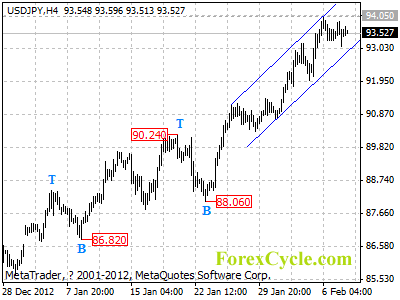London Gold Market Report
from Ben Traynor
BullionVault
Friday 8 February 2013, 07:30 EST
WHOLESALE MARKET gold prices hovered just above $1670 per ounce Friday morning, virtually unchanged over 24 hours despite some sharp moves yesterday as the Euro fell following the European Central Bank’s monetary policy decision.
“This sideways price action is characteristic of a market lacking direction, commitment or inspiration,” says a note from technical analysts at bullion bank Scotia Mocatta.
“We would like to think the market is building a base for another move back toward $1800, but we will not shift bullish from current neutral until the market closes back above $1700. A break below $1650 would shift us bearish looking for $1500.”
Heading into the weekend, gold looked to be headed for a second straight weekly gain by Friday lunchtime in London, although it was only a few Dollars up on last week’s close.
Silver by contrast was down 0.8% on the week, trading around $31.50 an ounce this morning.
Stock markets edge higher Friday, along with industrial commodities, while US Treasuries gave up early gains.
Dealers in India reported Friday that higher local gold prices were weakening demand after the Rupee fell to a one-week low against the Dollar.
“We had some deals yesterday night after the Euro came down along with gold, but [today] there has not been any movement,” one dealer at a state-run bullion importing bank told newswire Reuters today.
“If the Rupee appreciates, we may see good gold demand.”
“Pre-holiday buying” ahead of next week’s Chinese Lunar New Year has helped push gold higher this week, according to one Hong Kong-based dealer.
“But it’s pretty quiet on our side,” the dealer adds.
“Let’s see what people think about gold after the holiday.”
China’s trade surplus narrowed slightly last month, but was larger than the consensus forecast among analysts after both exports and imports grew more strongly than expected, official data published Friday show.
Chinese consumer price inflation meantime fell to 2.0%, down from 2.5% in December.
Earlier this week, the China Gold Association reported that China was the world’s biggest gold producer for the sixth year running last year, producing 403 tonnes, an 11.7% annual increase.
On the currency markets, the Euro traded just above $1.34 against the Dollar this morning, following yesterday’s 1.5% drop that coincided with European Central Bank president Mario Draghi’s press conference, following the ECB’s decision to leave its interest rate on hold at a record low 0.75%.
Draghi argued that the Euro’s appreciation in recent months was “a sign of the return of confidence” in the single currency. The ECB president however highlighted “heightened credit risk” and “weakness in credit demand” towards the end of last year.
Draghi also argued that inflation expectations “remain firmly anchored” in the Eurozone, interpreted by several commentators as increasing the likelihood the ECb could cut interest rates at a future meeting.
“We suspect the Euro tailwinds have abated markedly after Draghi,” says a note from Citi this morning.
“Investors will be mindful of the fact that further excessive currency appreciation could trigger an ECB response before long. In addition, with risks in the periphery on the rise again, the Euro could become more vulnerable than before.”
“Exchange rate comments can be successful for as long as they’re thought to be credible,” points out Chris Scicluna, head of economic research at Daiwa Capital Markets Europe.
“I’m not overly convinced that the ECB will get to a position where it will think about easing policy to offset the exchange rate.”
Gold in Euros touched a two-week high at €40,413 per kilo yesterday, and by Friday lunchtime in London was up 1.9% for the week.
Elsewhere in Europe, leaders meeting at the European Summit in Brussels Friday agreed to cut the European Union’s budget from €994 billion in the current cycle to €960 billion for the period 2014-2020 – down from the €1.047 trillion initially proposed.
The Japanese Yen meantime has “weakened more than we intended” since last September, Japan’s finance minister Taro Aso said Friday.
Against the Dollar, the Yen has fallen from 78 to 90 in less than six months, accelerating its rate of decline after the election of Shinzo Abe as prime minister in December. Since Abe’s election, the Bank of Japan has doubled its inflation target, with the BOJ’s current governor due to step down next month.
Gold value calculator | Buy gold online at live prices
Editor of Gold News, the analysis and investment research site from world-leading gold ownership service BullionVault, Ben Traynor was formerly editor of the Fleet Street Letter, the UK’s longest-running investment letter. A Cambridge economics graduate, he is a professional writer and editor with a specialist interest in monetary economics. Ben can be found on Google+
(c) BullionVault 2013
Please Note: This article is to inform your thinking, not lead it. Only you can decide the best place for your money, and any decision you make will put your money at risk. Information or data included here may have already been overtaken by events – and must be verified elsewhere – should you choose to act on it.


